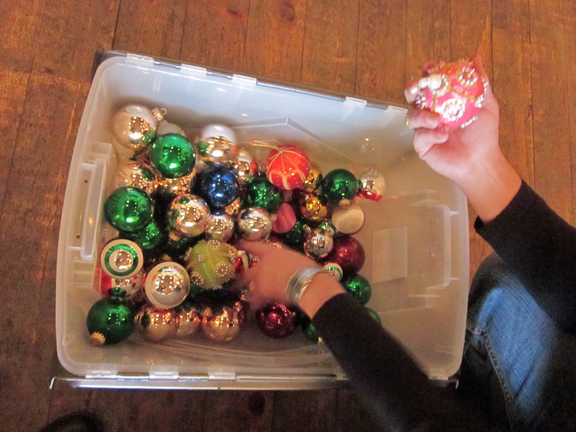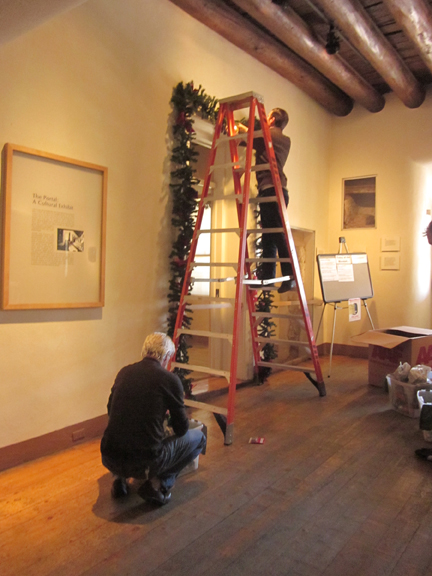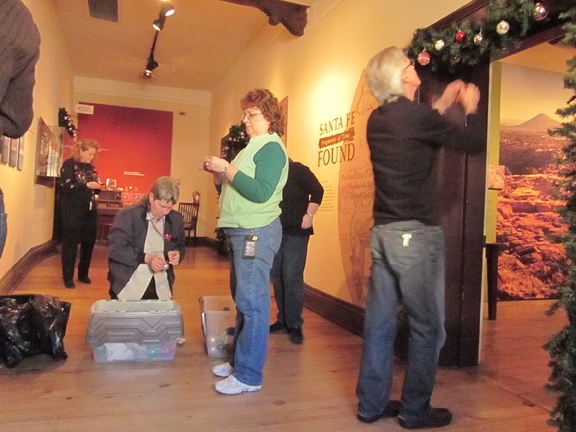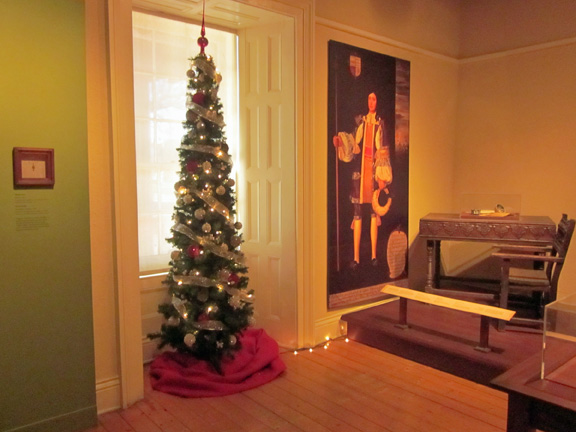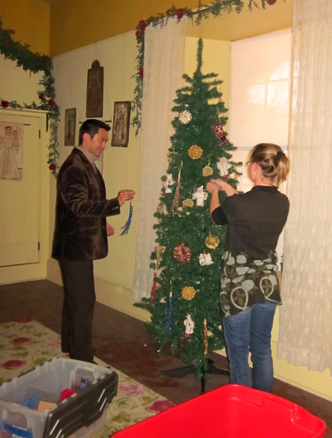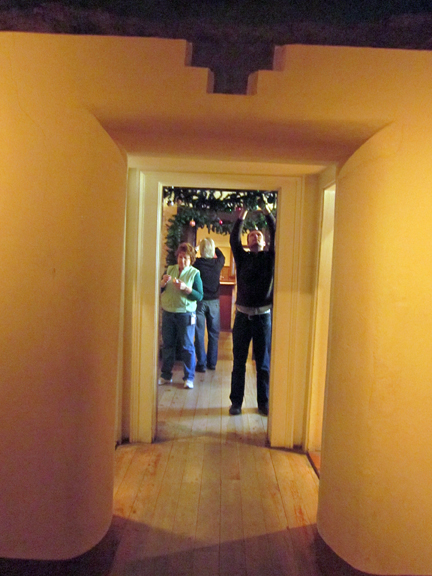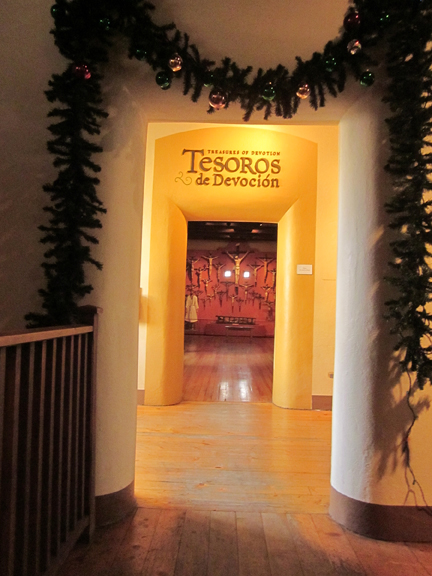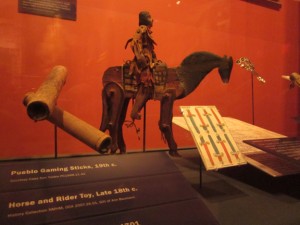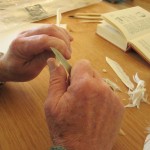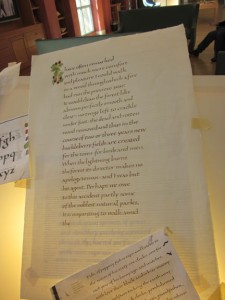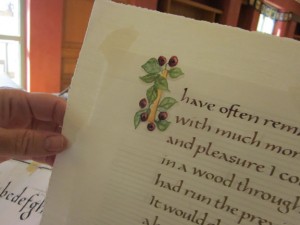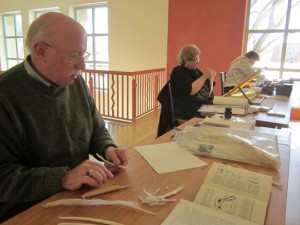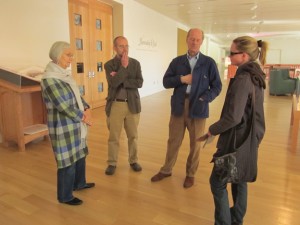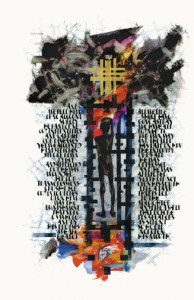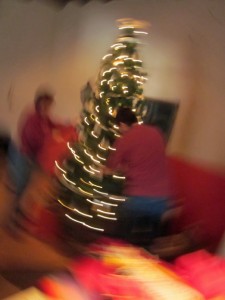 Staff and volunteers have been in a whirl over the last week helping the Palace of the Governors (a National Historic Landmark) don its gay apparel. Here are some photos of the process and the product. We hope you’ll stop by during December for some of our holiday festivities, which include:
Staff and volunteers have been in a whirl over the last week helping the Palace of the Governors (a National Historic Landmark) don its gay apparel. Here are some photos of the process and the product. We hope you’ll stop by during December for some of our holiday festivities, which include:
The First National Bank’s model train display. From Dec. 13-31, the train will chug over to our lobby because of the bank’s ongoing renovation project. This is a family-time holiday favorite.
A performance by Schola Cantorum and the monks of Christ in the Desert Monastery. At 2 pm on Sunday, December 4, in the Museum Auditorium, the Santa Fe-based sacred-music ensemble joins the monks for this event, tied to the exhibitions Illuminating the Word: The Saint John’s Bible and Contemplative Landscape. Expect to hear the sounds of Advent, the ancient pre-Christmas period with its roots in the seventh century. Free with admission; Sundays free to NM residents.
Christmas at the Palace. From 5:30-8 pm on Friday, December 9, enjoy an evening of hot cider, live music, piñatas for the children, and the annual visit of Mr. and Mrs. Claus, all in the legendary magic of the Palace of the Governors. A free, family event for all.
Las Posadas. From 5:30-7 pm on Sunday, December 11, join the community for this annual favorite. The candle-lit procession of Las Posadas travels around the Santa Fe Plaza and concludes in the Palace Courtyard. This version of an old Hispanic tradition recreates Mary and Joseph’s search for a place to give birth to the Baby Jesus – and throws in a few devils for good measure. Stay for carols in the Courtyard, along with cookies and refreshments. Free and open to the public.
Young Native Artists Show and Sale. On Saturday and Sunday, Dec. 17 and 18, children and grandchildren of the Palace Portal artisans will display their own creations in the museum’s John Gaw Meem Room. (Enter from Washington Avenue.) Pick up some nifty Christmas presents and support the next generation of Native American artisans.
To get our staff’s decoration day efforts started …
… Daniel Kosharek selected from a big bin of potential ornaments.
One of our newest employees, Mark Scharen, joined Daniel in reaching to new heights. (Mark and Daniel both work in the Photo Archives.)
Pretty much half the staff — (from left) Director Frances Levine, Finance Manager Judy Morse, Administration Angel Carla Ortiz, Librarian Patricia Hewitt (partly hidden), and Photo Archivist Daniel Kosharek — got busy decking the hallway outside of the exhibition Santa Fe Found.
In the Palace’s Architectural Room (the room to your right as you come in the building’s main entrance), we always have a tree with decorations donated to us by the late former First Lady Dee Johnson. The ornaments were made by New Mexico artists, and it feels good to remember Mrs. Johnson’s generosity to the museum.
Inside the Santa Fe Found exhibit is this tree, which was beautifully decorated by two of our most loyal Los Capitanes volunteers, Tay Balenovic and James Rivera. (How can a tree not look beautiful against window mouldings that fine?)
Curator Josef Diaz and Assistant Collections Manager Pennie McBride decorated this tree inside the Gov. Bradford Prince Room, which always has a Christmas-y feel with its ceiling garlands of greenery and roses.
Registrar Wanda Edwards and NEH Project Manager Patrick Cruz worked on this tree in the Mexican Governor’s Room, to the left as you walk in the main entrance. (That’s them in the blur of action at the top as well.)
After working on each of our doorways …
… they look like this.
The holidays in Santa Fe are a special time. The aroma of piñon smoke, the farolitos, fabulous shops, and terrific exhibitions at all of the state museums (but especially ours — hey, we’re allowed some parochialism here).
Stop on by. We’re open Tuesday-Sunday, 10 am to 5 pm, with free Fridays 5-8 pm. Sundays are free to NM residents, and children 16 and under are free every day. Come discover the child in you this holiday season.

